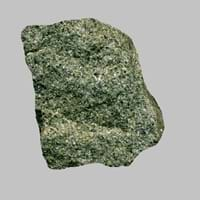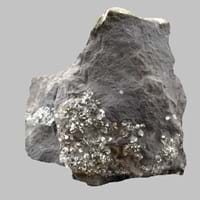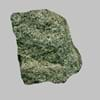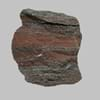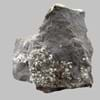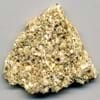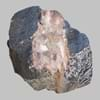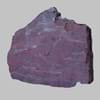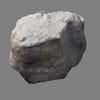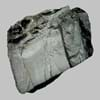Definition
Greywacke is defined as a dark coarse-grained sandstone rock which contains more than 15 per cent clay
Argillites are highly compact sedimentary or slightly metamorphosed rocks that consist largely or wholly of particles of clay or silt but lack the fissility of shale or the cleavage characteristic of slate
Discoverer
Unknown
Unknown
Etymology
From German Grauwacke, from grau grey + wacke
From Latin Argilla (clay) and -ite in English which became agrilla+ -ite = Argillite
Class
Sedimentary Rocks
Sedimentary Rocks
Sub-Class
Durable Rock, Hard Rock
Durable Rock, Soft Rock
Group
Not Applicable
Not Applicable
Other Categories
Fine Grained Rock, Opaque Rock
Fine Grained Rock, Opaque Rock
Texture
Clastic
Clastic, Polished
Color
Beige, Black, Brown, Colourless, Cream, Dark Brown, Green, Grey, Light Green, Light to Dark Grey, Pink, Red, White, Yellow
Dark Grey to Black, Pink, Red, White
Durability
Durable
Durable
Scratch Resistant
Yes
Yes
Appearance
Dull
Rough and Dull
Interior Uses
Decorative Aggregates, Floor Tiles, Flooring, Homes, Interior Decoration
Decorative Aggregates, Homes, Interior Decoration
Exterior Uses
As Building Stone, As Facing Stone, Garden Decoration, Office Buildings, Paving Stone
As Building Stone, Garden Decoration, Office Buildings
Other Architectural Uses
Curbing, Whetstones
Curbing, Whetstones
Construction Industry
Building houses or walls, Cement Manufacture, Construction Aggregate, for Road Aggregate, Raw material for the manufacture of mortar
Used for flooring, stair treads, borders and window sills.
Medical Industry
Not Yet Used
Not Yet Used
Antiquity Uses
Artifacts, Sculpture, Small Figurines
Artifacts, Monuments, Sculpture
Commercial Uses
As armour rock for sea walls, Petroleum reservoirs, Sea Defence, Tombstones
Fire resistant, Used to manufracture paperweights and bookends
Types
Not Available
Not Available
Features
Available in Lots of Colors and Patterns, Generally rough to touch, Non-vesicular, Veined
Is one of the oldest rock
Archaeological Significance
Monuments
Not Yet Used
Used
Famous Monuments
Not Applicable
Data Not Available
Famous Sculptures
Data Not Available
Data Not Available
Pictographs
Not Used
Used
Petroglyphs
Not Used
Used
Formation
Graywacke rock is a type of sedimentary rock, which is also known as immature sandstone, which is indurated, dark grey and consisting of poorly sorted angular to sub-angular, sand-sized grains.
An argillite is a fine-grained sedimentary rock mainly composed of clay particles which forms from lithified muds which contain variable amounts of silt-sized particles.
Mineral Content
Augite, Biotite, Calcite, Chlorite, Clay, Clay Minerals, Feldspar, Micas, Muscovite or Illite, Plagioclase, Pyroxene, Quartz
Biotite, Chlorite, Feldspar, Micas, Muscovite or Illite, Plagioclase, Pyrite, Quartz
Compound Content
Aluminium Oxide, NaCl, CaO, Chromium(III) Oxide, Iron(III) Oxide, FeO, Potassium Oxide, Magnesium Carbonate, MgO, MnO, Sodium Oxide, Phosphorus Pentoxide, Silicon Dioxide, Titanium Dioxide
Iron(III) Oxide, Potassium Oxide, MgO, Silicon Dioxide
Types of Metamorphism
Not Applicable
Not Applicable
Types of Weathering
Biological Weathering, Chemical Weathering
Biological Weathering
Types of Erosion
Coastal Erosion, Sea Erosion, Wind Erosion
Chemical Erosion
Grain Size
Angular and Fine
Fine Grained
Fracture
Conchoidal
Conchoidal to Uneven
Streak
White
White to Grey
Porosity
Highly Porous
Highly Porous
Luster
Dull
Waxy and Dull
Specific Gravity
2.2-2.8
2.56-2.68
Transparency
Opaque
Opaque
Density
2.6-2.61 g/cm3
2.54-2.66 g/cm3
Specific Heat Capacity
Not Available
Resistance
Heat Resistant, Impact Resistant, Pressure Resistant
Heat Resistant, Impact Resistant
Deposits in Eastern Continents
Asia
China, India, Kazakhstan, Mongolia, Russia, Uzbekistan
Bangladesh, China, India, Russia
Africa
Namibia, Nigeria, South Africa
Ethiopia, Kenya, Morocco, South Africa, Tanzania
Europe
Austria, Denmark, Germany, Great Britain, Netherlands, Norway, Poland, Sweden, Switzerland, United Kingdom
Austria, France, Germany, Greece, Italy, Romania, Scotland, Spain, Switzerland
Others
Greenland
Not Yet Found
Deposits in Western Continents
North America
Canada, USA
USA
South America
Brazil
Bolivia, Chile, Colombia, Ecuador, Peru, Venezuela
Deposits in Oceania Continent
Australia
New South Wales, New Zealand
New South Wales, New Zealand, Queensland, Victoria, Western Australia
All about Greywacke and Argillite Properties
Know all about Greywacke and Argillite properties here. All properties of rocks are important as they define the type of rock and its application. Greywacke and Argillite belong to Sedimentary Rocks.Texture of Greywacke is Clastic whereas that of Argillite is Clastic, Polished. Greywacke appears Dull and Argillite appears Rough and Dull. The luster of Greywacke is dull while that of Argillite is waxy and dull. Greywacke is available in beige, black, brown, colourless, cream, dark brown, green, grey, light green, light to dark grey, pink, red, white, yellow colors whereas Argillite is available in dark grey to black, pink, red, white colors. The commercial uses of Greywacke are as armour rock for sea walls, petroleum reservoirs, sea defence, tombstones and that of Argillite are fire resistant, used to manufracture paperweights and bookends.
